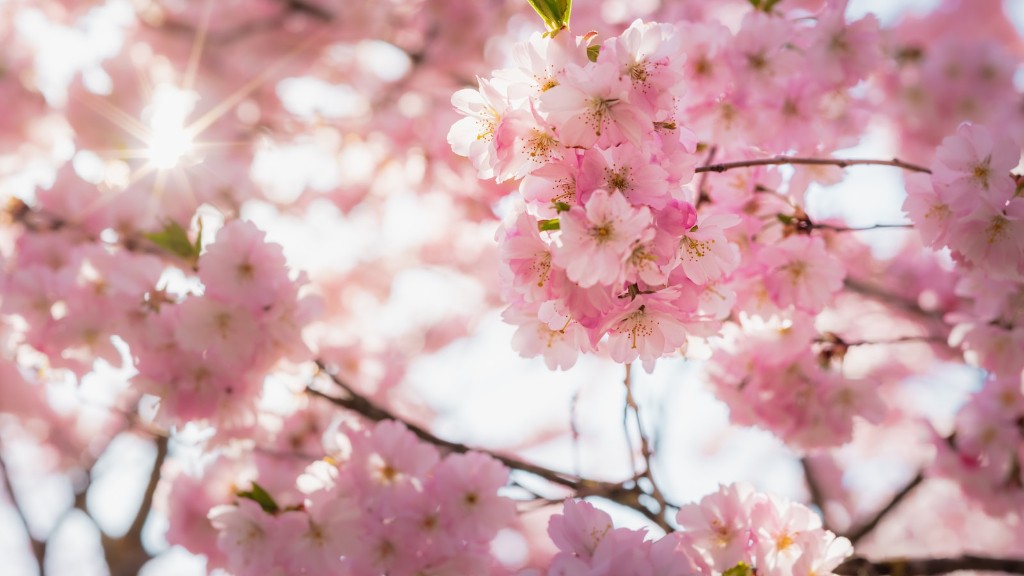Lemon trees belong to the evergreen family and are one of the most popular citrus fruits. Lemons are native to Asia and thrive in hot, humid climates. Lemon trees grow to about 20 feet tall and have oval-shaped, dark green leaves. Lemons are a source of vitamin C and are used to flavor a variety of foods and beverages.
A lemon tree will typically grow to between 6 and 10 feet tall. Lemons are a type of citrus fruit, and as such, lemon trees require full sun and well-drained soil. Lemons will also benefit from being fertilized regularly.
How long does it take to grow a lemon tree?
Lemon trees are a popular choice for people who want to grow their own fruit. When grown outdoors in warm climates, they can reach up to 20 feet tall and take up to six years to bear fruit. While this may seem like a long time, the wait is worth it for the delicious, juicy lemons that you’ll be able to enjoy for years to come.
Lemon trees require full sun, which means about 6 to 8 hours of direct sunlight daily. For indoor growth, simply place them in front of a south-facing or sunny window. Once you’ve scouted your chosen area and selected your favorite lemon tree, it’s easy to plant.
What are the stages of a lemon tree
Lemon trees are relatively easy to grow, and they have a few distinct growth stages. The first stage is germination, where the tiny seeds sprout and begin to grow. If all goes well, you will see tiny green leaves poking out of the soil. The next stage is the young seedling stage, where the seedlings slowly develop into saplings. After that, the lemon tree will begin to flower and fruit. The flowers will eventually turn into lemons, which can be harvested when they are ripe. Finally, the lemons can be dried and used in a variety of ways.
If you want your Meyer Lemon tree to bear fruit, you need to make sure it is comfortable and under the proper care conditions. With the right care, your tree will produce plenty of blossoms.
Are lemon trees toxic to dogs?
Citric acid can be toxic to dogs if eaten in large quantities. Symptoms of toxicity include GI upset and central nervous system depression. If your dog has eaten a lemon tree, stem, leaves, or fruit, please contact your veterinarian immediately.
Most container citrus trees will eventually measure near 6 feet tall, regardless of the variety or how often it is pruned. Dwarf varieties may take longer to reach this height, but will eventually get there with proper care. Be prepared for your tree to grow and plan accordingly!
What are three common problems that lemon trees can have?
Lesions on leaves and black moldy spots are the most common problems with lemon trees. Both can be caused by citrus canker and sooty mold. To treat these problems, you will need to remove the affected leaves and branches. You can also try treating the tree with a fungicide.
Fuzzy gray mold and brown spots are another common problem, known as botrytis blight. This can be caused by various fungi, including Botrytis cinerea. Treatment involves removing the affected leaves and branches and treating the tree with a fungicide.
Tan spots with dark outlines are another fungal disease known as anthracnose. This can be caused by several different fungi, including Colletotrichum acutatum. Treatment involves removing the affected leaves and branches and treating the tree with a fungicide.
Brown scabs are another common problem, caused by the lemon scab virus. Treatment involves removing the affected leaves and branches and treating the tree with a fungicide.
Lemon trees typically live for around 50 years, but they can live significantly longer – up to 100 years – when grown in optimal conditions and given regular care. Taking steps to prevent diseases and providing adequate fertilizer and pruning can help boost a lemon tree’s lifespan.
Do lemon trees grow better in pots or ground
Lemon trees are a popular choice for growers because of their ability to produce fruit year-round. However, there are some downsides to growing lemon trees in containers. One issue is that they are more vulnerable to the cold and drought. While a lemon tree in the ground can take mild frost and cold, a lemon tree in a container cannot. Another issue is that lemon trees in containers have a hardiness zone that is one zone higher than the USDA recommended zone. This means that in areas where the winters are harsh, the tree may not be able to survive.
Meyer lemon trees are a great choice for those looking for a citrus tree that bears fruit year-round. The tree is also relatively small, only reaching a height of 2-3 feet, making it a good option for those with limited space.
How many times do you water a lemon tree?
Most lemon tree growers need to water their potted plant once every 3-7 days. However, beware that the frequency with which you need to water your lemon tree may change over time. Factors such as plant size, temperature, and humidity can affect the frequency with which you need to water.
A healthy lemon tree will begin to bear fruit in between 3 and 5 years of age, and continue to do so until its death. Lemon trees can live for a very long time, bearing fruit for decades. However, the fruit production will decline as the tree ages.
Why does my lemon tree flower but not produce lemons
Lemon trees are very sensitive to cold weather and can lose their blossoms if exposed to extreme temperatures for too long. If you live in an area with cold winters, it’s important to protect your lemon tree from the cold by wrapping it in burlap or placing it in a sheltered spot.
Most lemon trees need 1-3 years to grow out of their juvenile phase into fully matured plants. So if your tree is only one year old, it likely won’t have fruit-bearing capabilities just yet. Keep this in mind when considering the age of your lemon tree!
Should I pick the flowers off my lemon tree?
If you see small green fruit on your flower plants, don’t worry! This is perfectly normal and you don’t need to do anything. The fruit will eventually fall off without setting. So just focus on the flowers and enjoy their beauty.
While it is true that many citrus trees grow thorns at some point during their lifecycle, pruning them away will not damage the tree. In fact, pruning away the thorns can actually help the tree to grow and thrive.
What happens if a dog licks a lemon
Citric acid is harmful to dogs, especially in large quantities. It can cause extreme stomach upset, and even vomiting and diarrhea. Lemons are high in citric acid. Though a single lick of lemon or lemon juice probably won’t turn your dog’s stomach, too much of it can make them feel very sick.
If you’re looking to grow a lemon tree indoors, you have a few different options to choose from. Meyer lemons are very popular, but you can also try growing the exotic Buddha’s Hand lemon tree. These trees have a unique appearance, looking like a creepy yellow hand. Either way, you can enjoy fresh lemons all year round!
Final Words
Lemon trees grow best in full sun and well-drained soil. They are relatively drought tolerant and can tolerate a wide range of soil conditions. Lemon trees are usually propagated by grafting, although they can be grown from seed.
The lemon tree grows best in full to partial sun and well-drained soil. When planting, be sure to space the lemon trees at least 10 to 15 feet apart. Lemon trees are relatively low-maintenance and are not susceptible to many pests or diseases. With proper care, a lemon tree will provide fruit for many years.




